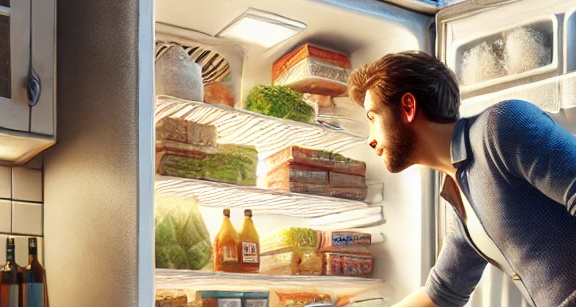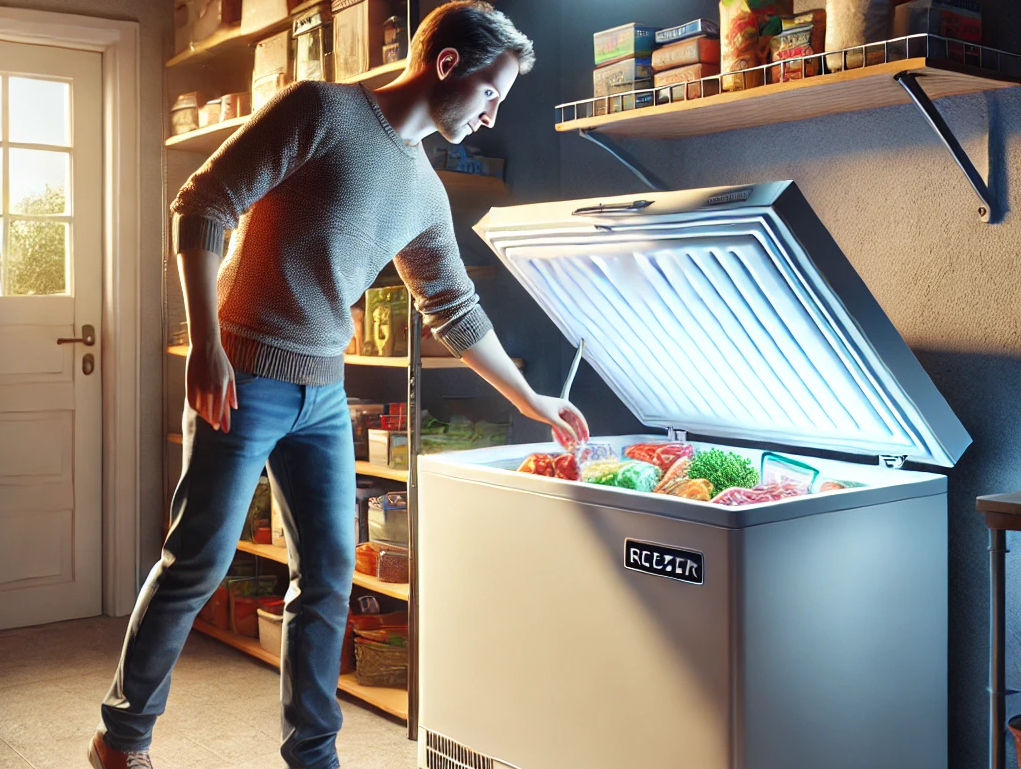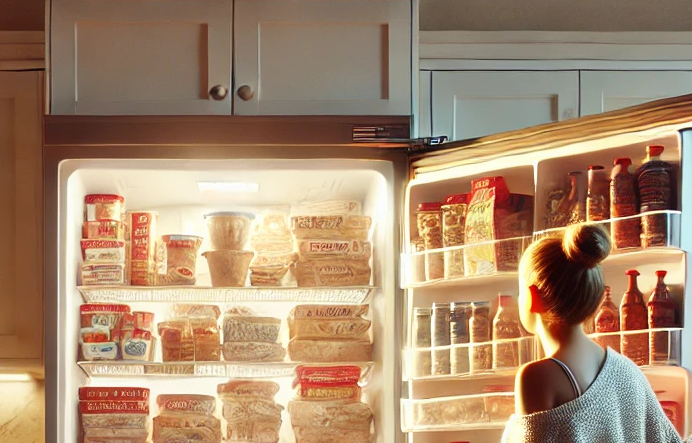What is a Freezer Door Gasket?
A freezer door gasket is a flexible seal that outlines the edge of the freezer door, ensuring an airtight closure to maintain cold temperatures inside and prevent warm air from entering.
The freezer is a vital household appliance that preserves food at safe temperatures. The freezer door gasket, a simple yet crucial seal, enhances the appliance's efficiency by conserving energy and optimizing performance. Maintaining this gasket is essential; a well-kept seal ensures the freezer operates efficiently, while a neglected one may struggle, resulting in higher energy costs and accelerated wear.
KEY TAKEAWAYS
- Regularly inspect and maintain your freezer door gasket to ensure optimal energy efficiency and performance.
- Immediate replacement of a worn or damaged gasket can prevent increased energy costs and food spoilage.
- Professional maintenance and timely repairs prolong the lifespan and functionality of your freezer.
Ensuring an Efficient Seal
The effectiveness of your freezer hinges largely on the integrity of the door gasket. This component is crucial as it traps the cold air inside the freezer and blocks warm air from infiltrating. A compromised door gasket can lead to excessive energy consumption and spoilage of stored food due to inconsistent temperatures. Ensuring a robust seal not only enhances the efficiency of your appliance but also extends the lifespan of the food stored within.
Energy Efficiency
A well-maintained door gasket is pivotal for energy conservation in freezers. When the seal is tight, the freezer operates efficiently by maintaining the desired temperature without exerting extra energy.
- Regularly inspect the gasket for cracks or wear.
- Clean the gasket every month to remove food particles and residues that can degrade the seal.
- Check for gaps by closing the door on a thin piece of paper; if the paper slides out easily, the seal may need replacing.
Food Preservation
The door gasket plays a critical role in food preservation by stabilizing the internal temperature of the freezer. A secure seal prevents warm air from entering, which is essential for preventing freezer burn and spoilage.
- Ensure the seal is free from any obstructions that could prevent the door from closing properly.
- Replace the gasket if you notice persistent moisture or ice build-up inside the freezer.
- Consider using a thermometer to monitor the freezer's internal temperature regularly, ensuring it remains consistent.
Signs of a Worn Gasket
Identifying the early signs of a worn gasket helps maintain the operational efficiency of your freezer. A failing gasket not only compromises the appliance's performance but can also lead to increased energy consumption and reduced food preservation quality. Timely recognition and replacement of a deteriorated gasket can prevent further complications and ensure your freezer continues to function effectively.
Visible Wear and Tear
Physical deterioration is a straightforward indicator that your freezer gasket needs attention. Observing the condition of the gasket regularly can help you decide when it's time to replace it.
- Inspect the gasket for any signs of cracks, tears, or brittleness.
- Feel the texture of the gasket; a hard and inflexible feel suggests it's time to install a new one.
- Look for any discoloration or mold, which can also impair the gasket's functionality.
Difficulty Closing the Door
If closing the freezer door becomes a challenge, it might be due to a compromised gasket. A properly functioning gasket allows the door to shut firmly and smoothly.
- Check if the door rebounds or fails to stay shut, which is often caused by gasket issues.
- Examine the alignment of the door and the gasket to ensure no part of the gasket is out of place.
- Periodically clean the gasket and the door frame to remove debris that could prevent a tight seal.
Increased Energy Bills
An unexpected increase in your energy bills can sometimes be traced back to a failing freezer gasket. A leaky gasket forces the freezer to run longer and work harder, using more energy.
- Monitor your energy bills for unusual increases that could indicate a sealing issue.
- Listen for the freezer motor; if it seems to run excessively, this could be a response to escaping cold air.
- If energy consumption rises without a corresponding increase in usage, check the gasket and consider consulting a professional for a thorough assessment.
Maintaining and Replacing Your Freezer Door Gasket
Attentive maintenance and prompt replacement of the freezer door gasket are key to maximizing both the performance and the lifespan of your freezer. Proper care prevents common issues like air leaks and energy waste, while timely replacement ensures that your appliance continues to operate at its best efficiency.
Regular Cleaning
Keeping the gasket clean prolongs its elasticity and sealing capability. Routine cleaning can extend the life of the gasket and improve the overall efficiency of your freezer.
- Use a soft cloth or sponge with a mild detergent mixed in warm water to gently clean the gasket.
- Focus on removing any food particles, grease, or other residues that accumulate in the gasket folds.
- Always dry the gasket thoroughly with a clean towel to prevent any moisture-related problems such as mold or mildew formation.
Gasket Inspection
Regular inspections can help catch early signs of wear and tear, allowing for timely interventions that could extend the gasket's usability.
- Conduct the dollar bill test to check the effectiveness of the gasket's seal: Close the freezer door with a dollar bill placed so half is inside and half is outside; if it slides out easily, the seal might be compromised.
- Examine the gasket for stiffness, cracks, or other deformities at regular intervals.
- Look for consistent frost buildup or condensation as these could indicate seal issues.
Professional Replacement
While some may opt for DIY methods to replace a freezer door gasket, professional installation can ensure a perfect fit and optimal functioning of the appliance.
- Consider professional services when replacing the gasket to guarantee it is installed correctly and efficiently.
- Professionals can also assess the freezer's condition and perform other maintenance tasks that enhance the unit's performance.
- If unsure about the specific gasket model or installation process, a technician's expertise can provide peace of mind and save time.
Enhancing Your Appliance's Efficiency
A well-maintained door gasket is integral to maintaining the overall efficiency of your freezer. Ensuring that the gasket is in optimal condition not only enhances the performance of the freezer but also contributes to energy savings and improved food safety.
Preventative Maintenance
Regular preventative maintenance by a professional can extend the lifespan of your freezer's door gasket and enhance the appliance's overall efficiency.
- Schedule routine inspections with a technician to check the gasket and other critical components.
- Have any minor issues with the gasket fixed promptly to avoid bigger, more costly problems in the future.
- Use professional services to adjust and align the door if the seal is found to be ineffective during checks.
Cost Savings
Maintaining a tight seal on your freezer door minimizes energy consumption and reduces utility bills.
- Ensure that the gasket is free from any tears or gaps that could let cold air escape, forcing the freezer to work harder.
- Replace the gasket as needed to maintain optimal energy efficiency and performance.
- Regularly test the seal by closing the door over a piece of paper; if the paper pulls out easily, it may be time to consider replacing the gasket.
Food Safety
A functioning door gasket ensures safe food storage temperatures, reducing the risk of foodborne illnesses.
- Inspect the gasket for any signs of damage or wear that might compromise its ability to maintain consistent internal temperatures.
- Ensure the door closes properly every time to prevent warm air from entering and affecting the stored food.
- Replace the gasket immediately if you notice frequent frost buildup or if the freezer seems unable to maintain a steady temperature.
The freezer door gasket plays an important role in the functionality and efficiency of your freezer. By recognizing its significance, conducting regular inspections for wear, and adhering to routine maintenance protocols, you can guarantee that your freezer operates at its optimal performance level, ensuring safe and effective food preservation.
If you observe signs of wear or believe your gasket requires maintenance or replacement, our team at Sears Home Services is ready to assist you. Our skilled technicians offer comprehensive advice, maintenance, and replacement services to maintain the efficiency of your freezer and other home appliances.
-
Schedule Maintenance: Don't wait for a breakdown. Book a maintenance check with our professionals to keep your freezer in top condition.
-
Schedule Repair: If your freezer is showing signs of malfunction or if the gasket needs replacing, schedule a repair service with us today and ensure your appliance continues to function efficiently.
Schedule your freezer repair now!
Trust our skilled technicians to repair your freezer promptly, regardless of where you bought it.
Was this content helpful?
Repair Freezer Resources
Learn what your freezer’s temperature should be and how to safely preserve your food.
Learn how chest freezers work and how to troubleshoot common problems.
Find out how frost free freezers work and how to troubleshoot common problems.
Is it worth repairing a freezer? Explore the pros and cons and make the right choice for your budget with Sears Home Services.
Glossary Terms
A freezer bag is a specially designed plastic bag used for the cold storage of food in the freezer, offering protection against freezer burn and preserving the food's freshness and flavor over extended periods.
A freezer compressor is a vital component of a freezer's refrigeration system, functioning as a pump to circulate refrigerant through the system, which cools the interior by absorbing and expelling heat.
A manual defrost freezer is an appliance that needs to be switched off and allowed to thaw periodically to remove accumulated ice, ensuring efficient operation and storage space maximization.
A ductless range hood, also known as a recirculating hood, filters and recirculates air in the kitchen, removing smoke, heat, and cooking odors without venting outdoors.
Common Repair Freezer Symptoms
The most common reasons your Whirlpool freezer won't make ice are a failed compressor, old water filter or a faulty dispenser.
The most common reasons your Whirlpool freezer is not working are a failed compressor, malfunctioning electronic control board or a faulty condenser fan motor.
The most common reasons your Whirlpool freezer is not cooling are a failed compressor, malfunctioning electronic control board or a bad evaporator.
The most common reasons your Whirlpool freezer light is not working are a malfunctioning electronic control board, broken LED light assembly or a bad power supply board.
The most common reasons your Whirlpool freezer is leaking water are a clogged drain tube, cracked water tubing or a bad evaporator.
The most common reasons your Whirlpool freezer is leaking are a clogged drain tube, dead ice maker assembly or a bad evaporator.



